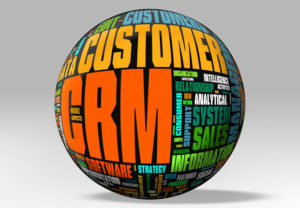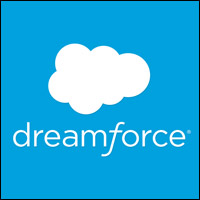The Dunning-Kruger effect is a cognitive bias that leads relatively unskilled individuals to believe their ability is be much higher than is accurate. The individuals might be highly skilled and successful in other areas, but they behave like novices in new areas outside of their skill zones. The bias was observed experimentally for the first time in 1999, by David Dunning and Justin Kruger of Cornell University.
Many business people mistakenly assume their skills at making money are translatable to the public sector, and they are sometimes surprised, after spending large sums, to find that the reality is quite different. Simply put, laudable social goals might not be achievable with a for-profit mindset. For example, societal missions have no endpoint, in contrast with a business quarter in which profits are measured and reported. This suggests the Dunning-Kruger effect in action.
Nevertheless, there is significant overlap between the spheres. Philanthropic efforts can promote social benefits by investing in human capital through education, nutrition, healthcare and other things that often drive future benefits for society.
At the same time, the size and scale of most businesses, along with greater resources such as financial assets, people, organization, and transportation and supply chains, can amplify the good philanthropic intentions. However, just as it takes a specialist to fly a commercial airliner, there’s a skillset to philanthropy that must be learned.
Not Naming Names, but
A great example of Dunning-Kruger in action might be the failed 2010 US$100 million donation made by Mark Zuckerberg, CEO of Facebook, to the Newark, N.J., schools. A 2015 Business Insider article said the reforms Zuckerberg tried to implement “are widely seen as a failure .”
The original $100 million became $200 million, but even that wasn’t enough to drive success, according to journalist Dale Russakoff, author of The Prize: Who’s in Charge of America’s Schools? The money went to categories like labor and contract costs, consultants, charter schools and various local initiatives.
“Zuckerberg envisioned the teacher contract reform to be a centerpiece of the reform and contributed $50 million — half of his total donation — to go to working on that cause, wrote Abby Jackson, author of the Business Insider piece.
Zuckerberg wanted to be able to create more flexibility in teacher contracts to reward high-performing teachers and to fire teachers with poor records of student achievement.
However, those types of protections are determined by New Jersey law, and Zuckerberg couldn’t simply come in and change the rules without going through the state legislature to make the changes.
That’s Dunning-Kruger in a nutshell: Not knowing what was possible, Zuckerberg and his team spent a great deal of money essentially — and literally — fighting city hall over personnel issues, and only a minority of their capital on education. In the end, a great philanthropic impulse dissipated for lack of understanding and appropriate planning.
This Always Worked Before
As recently as a generation ago, the role of philanthropists largely was seen as donating financial assets to good causes. The recipients were targeted institutions with well-defined operating areas and enough infrastructure to complete their missions. (That’s exactly what Zuckerberg did, though he didn’t seem to ask if his goals actually were possible.)
Traditional philanthropy from the days of Carnegie, Ford and the Rockefellers often set up organizations to distribute fortunes made during a business career to good causes. While those philanthropists certainly were involved, they relied on staff and others to accomplish missions they set forth.
While the need for philanthropy has grown since that time, the arena also has presented a treacherous path for people with money but not necessarily the right skill sets.
For instance, governments, NGOs and the UN all recognize the potential of developing PPPs, or Public-Private Partnerships, in which people with recognized skills develop programs and best practices for others to emulate. Often, philanthropists who engage in PPPs find they have well organized and proven programs that they can participate in.
Philanthropy Is Changing
A new generation of philanthropists has emerged, comprised of people in the prime of their careers who are determined to share some of their considerable wealth while they can enjoy the experience. This brings up a potential problem where the Dunning-Kruger effect manifests itself in what I call the “what to do and how to do it” trap.
It’s not unusual to see a newly minted philanthropist apply a pile of money to a problem with the proviso that it will be spent a certain way (what to do). In so doing, the philanthropist tries to apply personal knowledge (how to do it) from the business world to an endeavor different from his or her core abilities, and the results often are mixed.
The news is becoming full of stories about philanthropy efforts over multiple years that were less than unqualified successes, and this trap figures prominently. Often, unlike PPPs, these philanthropists are armed mostly with good intentions but not significant experience or skill sets, hence the manifestation of the Dunning-Kruger effect in philanthropy.
People Seek Purpose
In many aspects of daily life, including business, people are assumed to possess a relevant education and wherewithal so that directing or “how to do it” can be kept to a minimum. The essence of good leadership in business is to tell subordinates what to do, and to empower them to accomplish the mission using their well-honed skills.
When this basic division is maintained in philanthropy, execution get pushed downstream to people with know-how. In many ways, modern philanthropy inverts the traditional model of Carnegie, Ford and the Rockefellers. Today a philanthropist, can be anyone from any walk of life who simply wants to make a difference by donating time as well as financial resources. These philanthropists need to find charities whose missions most fully approximate their own.
For instance, one might be inclined to support efforts in adult literacy, or nutrition, or public health, or environmental causes. All these ideas are well represented in the charitable universe. The only weakness in the system is that except for the largest among them, few are well known enough to attract the support they need to accomplish their missions.
This is where technology is best positioned to do the most good by bringing together need, resources and subject matter experts.
Role of Leadership
Business leaders have a significant role to play, provided they can avoid the Dunning-Kruger effect. That’s very important today, because many executives have been discovering that their employees and customers expect them and their companies to take leadership positions in making the world better.
Research shows that employees who believe their companies and CEOs are focused on societal issues that are important to employees derive greater job satisfaction and remain with their companies longer than peers at less-involved companies. So it turns out that doing good (i.e., through well-chosen philanthropic projects) has become a key component for doing well, or doing good business.
My Two Bits
Correctly identifying need and matching it with resources underpins the Salesforce.org Philanthropy Cloud. It brings experts from charities that need resources together with philanthropists in a position to give. Most importantly, Philanthropy Cloud recognizes the expanded role of philanthropist to mean anyone with time or resources to donate.
In addition to its functionality, Philanthropy Cloud brings with it the best practices honed by experts in many fields. This ensures that philanthropists spend less time on the how to do it aspects of their efforts and more time and resources getting the results they seek.
Finally, when businesses bring Salesforce.org’s Philanthropy Cloud into their organizations, they provide a concrete example of successful corporate involvement in worthy causes that many employees value today. The result is well-organized and productive philanthropy outreach that any successful business person can appreciate.


























































Social CRM
See all Social CRM